|
|
 |

I’m well aware of the fact that I’ve got the World’s Best Job, and I’d know that even if people didn’t tell me all the time (which they do). Grateful man that I am, I believe it is good karma to tip my hat to outstanding performances that I’ve encountered each year, and here are some profiles that will be followed by a second set in four weeks. Having logged more than 70,000 air miles in 2016 and tasted over 9,000 wines, it is fair to say that I’ve been around the block, and here are some of the best things I encountered along the way:
Best New Producer: Viña Vik
Norwegian entrepreneur Alexander Vik embarked in 2004 on an effort to make a truly great wine in South America, searching for a superb site and searching with the best viticultural team he could hire. He settled on a 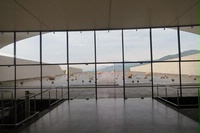 location two years later, buying … an entire valley. I have never met the man, but I did see the place last year, and I can say with certainty that he doesn’t mess around. Along with his wife, Carrie, Vik has built an eye-popping enterprise on more than 10,000 acres roughly 2 hours south of Santiago in Chile. The spectacular vineyard, winery, lodging and restaurant are set in the Millahue Valley, or “Place of Gold”, as named by the indigenous people. location two years later, buying … an entire valley. I have never met the man, but I did see the place last year, and I can say with certainty that he doesn’t mess around. Along with his wife, Carrie, Vik has built an eye-popping enterprise on more than 10,000 acres roughly 2 hours south of Santiago in Chile. The spectacular vineyard, winery, lodging and restaurant are set in the Millahue Valley, or “Place of Gold”, as named by the indigenous people.
Now that we’ve worked the word “gold” into this account, I’m obliged as a journalist to acknowledge that almost anybody can produce something striking if they’ve got sufficient funds. However, not just anybody can create a genuinely distinctive and beautiful (as opposed to ostentatious) 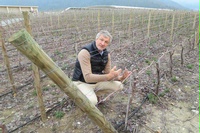 winery and hotel. Moreover, not just anybody can set up a vineyard that makes downright great wine from the very start, and the French would tell you that it is impossible to make a great wine with vines planted for less than multiple decades. Well, one Frenchman in particular, Bordeaux-born Patrick Valette, has proved this wrong, and the 2011 release he has wrought along with winemaking partner Christian Vallejo proves the point absolutely convincingly. I’ll be writing more on Viña Vik in the coming year, as there’s much to be learned by examining just how this winery and vineyard got so good so fast. But for now, let’s just focus on the flagship wine: winery and hotel. Moreover, not just anybody can set up a vineyard that makes downright great wine from the very start, and the French would tell you that it is impossible to make a great wine with vines planted for less than multiple decades. Well, one Frenchman in particular, Bordeaux-born Patrick Valette, has proved this wrong, and the 2011 release he has wrought along with winemaking partner Christian Vallejo proves the point absolutely convincingly. I’ll be writing more on Viña Vik in the coming year, as there’s much to be learned by examining just how this winery and vineyard got so good so fast. But for now, let’s just focus on the flagship wine:
Viña Vik, Millahue, Cachapoal Valley, Chile 2011 ($150): This is just the third release of this wine, made from extremely young fruit, but it already shows a mind-boggling level of complexity and class. Blended from Cabernet Sauvignon (55%), Carménère (29%), Cabernet Franc 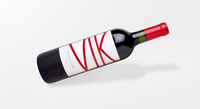 (7%), Merlot (7%) and Syrah (4%), it shows beautiful and deep color extending all the way to the edge of a slanted glass. Balanced scents of fruit and subtly toasty oak are very alluring, with savory accents beginning to emerge in the aromas and flavors. Acidity, tannin and wood are all quite notable, but they present themselves very proportionally, and these structural elements leave center stage to the gorgeous fruit. This will unwind additional complexities for years to come, but is already a totally convincing wine. Tasted multiple times (including in a blind tasting alongside a sizeable set of Chile’s most eminent wines), I’ve consistently rated this at: 96 (7%), Merlot (7%) and Syrah (4%), it shows beautiful and deep color extending all the way to the edge of a slanted glass. Balanced scents of fruit and subtly toasty oak are very alluring, with savory accents beginning to emerge in the aromas and flavors. Acidity, tannin and wood are all quite notable, but they present themselves very proportionally, and these structural elements leave center stage to the gorgeous fruit. This will unwind additional complexities for years to come, but is already a totally convincing wine. Tasted multiple times (including in a blind tasting alongside a sizeable set of Chile’s most eminent wines), I’ve consistently rated this at: 96
Best Alsace Riesling:
Schoffit Grand Cru Rangen de Thann Clos Saint-Theobald 2013 ($60): This isn’t the most forceful or attention-grabbing Riesling I’ve tasted from Alsace recently, but for sheer proportionality and stylishness 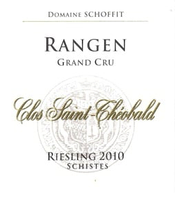 and overall beauty, it would be my choice. It achieves wonderful expressiveness in both aroma and flavor in a dry style, yet leaves an overall impression of coolness and restraint. This is attributable to impeccable balance and integration, as all of the components seem perfectly interwoven. Wines like this have a rare ability to retain their proportionality even as they age and gain complexity in the bottle, and I’ll be keeping an eye on this as it develops over the next decade. Just when it seemed that exciting dry-style German Rieslings and terrific renditions from Austria, Canada, Australia, New York and Michigan were going to push Alsace down onto a lower tier on the Global Riesling Totem Pole, along comes a beauty like this. 95 and overall beauty, it would be my choice. It achieves wonderful expressiveness in both aroma and flavor in a dry style, yet leaves an overall impression of coolness and restraint. This is attributable to impeccable balance and integration, as all of the components seem perfectly interwoven. Wines like this have a rare ability to retain their proportionality even as they age and gain complexity in the bottle, and I’ll be keeping an eye on this as it develops over the next decade. Just when it seemed that exciting dry-style German Rieslings and terrific renditions from Austria, Canada, Australia, New York and Michigan were going to push Alsace down onto a lower tier on the Global Riesling Totem Pole, along comes a beauty like this. 95
Best of Argentina:
Valentin Bianchi (San Rafael, Mendoza) “Enzo Bianchi” 2012 ($55, Quintessential): Everybody in the wine trade knows that red wines from Argentina “over-deliver,” but far from everybody knows that this is good news at lower price points…but bad news at higher ones. To be clear, Malbec from Argentina priced around $12 retail delivers lots of flavor without much tannin, and the wines are extremely consistent thanks to a very sunny, dry climate (caused by the “rain shadow” cast by the Andes). This explains their phenomenal commercial success. However, when it comes to higher-priced “statement wines” from Argentina, “over-delivering” usually means too much of everything: Too much ripeness, too much sweetness, too much alcohol, too much oak…all at the cost of complexity and versatility at the table.
With that noted, this wine stands as a terrific exception to the rule. Granted, it doesn’t look like one, as it is packaged in a super-heavy bottle with an ornate label adorned with four Cherubs (which are--for those not schooled in art history—winged, naked baby angels), and two of the 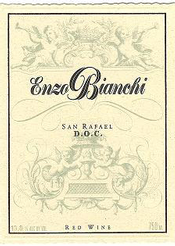 Cherubs are actually blowing trumpets (not generally a harbinger of subtlety and restraint). Yet, get this wine into a glass and it shows outstanding class and complexity, with intricate aromas, layered flavors, subtle oak, and moderate alcohol. The blend offers some insight into the wine’s performance: 75% Cabernet Sauvignon, 10% Cabernet Franc, 8% Petit Verdot and 7% Malbec. Everybody is supposed to salute Malbec as Argentina’s best variety, and at lower price levels it often is, but I find that Cabernet shows more structure and less gooey ripeness. Despite the fact that I was against this from the start based looks alone, I absolutely loved the wine, which out-performs “statement wines” from Argentina costing twice as much. 95 Cherubs are actually blowing trumpets (not generally a harbinger of subtlety and restraint). Yet, get this wine into a glass and it shows outstanding class and complexity, with intricate aromas, layered flavors, subtle oak, and moderate alcohol. The blend offers some insight into the wine’s performance: 75% Cabernet Sauvignon, 10% Cabernet Franc, 8% Petit Verdot and 7% Malbec. Everybody is supposed to salute Malbec as Argentina’s best variety, and at lower price levels it often is, but I find that Cabernet shows more structure and less gooey ripeness. Despite the fact that I was against this from the start based looks alone, I absolutely loved the wine, which out-performs “statement wines” from Argentina costing twice as much. 95
Best Barbaresco:
Ca’ Rome’, Barbaresco “Rio Sordo” 2012 ($70, Empson, USA): Ca’ Rome’ is a terrific producer of both Barolo and Barbaresco (as well as Dolcetto and Barbera), made in absolutely immaculate conditions in a gorgeous little winery located in the Barbaresco district. It you find yourself anywhere in the neighborhood, this will prove to be one of the sweetest winery visits you’ll ever enjoy. As for this particular wine, it shows highly distinctive scents of menthol and peppermint get this wine off to a striking start, and the flavors really follow through with a rich, open sweetness that perfectly offsets the high-toned aromatics. If you’ll permit an audiophile analogy, this has perfect balance between treble and bass. The wines from Ca’ Rome’ are all on the expensive side for their types, but the quality is so high that all of them offer excellent value. 94
Best Barolo:
Paolo Manzone (Serralunga “Meriame”) 2012 ($70, Quintessential): This designated cru wine from Serralunga standout Paolo Manzone is the one to buy from the 2012 vintage if you can afford the somewhat higher purchase price, as it shows greater overall complexity and dimension than the standard Serralunga village Barolo. Yet, this latter wine is so good--regardless of its lower price--that we should start with it: Paolo Manzone (Serralunga) 2012 ($55) My blind-tasting scores for the wines 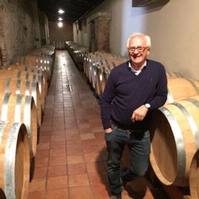 of Paolo Manzone were already rising for the past couple of years, prior to my first meeting with him in May of 2016, and it is perhaps also worth noting that this wine was also tasted and scored prior to my first encounter with this infectiously enthusiastic man. This is a terrifically impressive “village” wine with no cru designation, showing the overall attention to quality at this estate. Soft and sexy and very deep in flavor and texture, this shows wonderful integration of its fruity and savory and woody elements. Terrific! 94. Moving on--and up--to the Serralunga “Meriame” 2012, it is even silkier in texture and more elegant in character than the village wine from Serralunga, yet the fruit shows darker tones and more grip and firmness in the finish, suggesting a longer period of positive development ahead of it. Billowing, sexy aromas and impressively dark color draw immediate attention, and things only get better from there, with gorgeous notes of cola and dried black cherries accented with savory hints but virtually no overt oak at all. Both Manzone wines are stunning from 2012, and both should be bought without a moment’s hesitation, but this is the one that should make you take a hammer to your piggy bank. 96 of Paolo Manzone were already rising for the past couple of years, prior to my first meeting with him in May of 2016, and it is perhaps also worth noting that this wine was also tasted and scored prior to my first encounter with this infectiously enthusiastic man. This is a terrifically impressive “village” wine with no cru designation, showing the overall attention to quality at this estate. Soft and sexy and very deep in flavor and texture, this shows wonderful integration of its fruity and savory and woody elements. Terrific! 94. Moving on--and up--to the Serralunga “Meriame” 2012, it is even silkier in texture and more elegant in character than the village wine from Serralunga, yet the fruit shows darker tones and more grip and firmness in the finish, suggesting a longer period of positive development ahead of it. Billowing, sexy aromas and impressively dark color draw immediate attention, and things only get better from there, with gorgeous notes of cola and dried black cherries accented with savory hints but virtually no overt oak at all. Both Manzone wines are stunning from 2012, and both should be bought without a moment’s hesitation, but this is the one that should make you take a hammer to your piggy bank. 96
Best Aged Wine:
Meulenhof (Mosel, Germany) Erdener Treppchen Riesling Spätlese 1990 (NA; current 2015 vintage, $30): I’ve tasted way more than my share of exceptional older wines during the past year, often thanks to the generosity of others. But this is one that I purchased upon release, and have dragged around with me through multiple relocations, and it has never been treated to refrigerated cellaring. The cork was very crumbly and the wine showed deep coloring indicative of significant oxidation 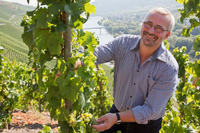 over time, and yet the aromas and flavors were still phenomenally vibrant. Scents of pressed flowers and black tea lead to flavors centered on mandarin orange marmalade, and though the wine is still quite sweet, the acidity is still almost electric after all these years. Indeed, the acidity was actually too much for my wife (to whom I ran with the glass…yelling, “Taste this!”), who loves bright wines. As for me, the acidity was absolutely perfect in relation to the wine’s luscious sweetness and open fruit. I’m writing about this not to gloat about an experience that you can’t replicate, but rather to encourage you to buy (and age) German Rieslings at all levels of sweetness--precisely so that you can indeed replicate this experience. These wines remain seriously under-priced in relation to their quality and the costs entailed in their production, and they remain the world’s purest expression of the vintner’s art. 97 over time, and yet the aromas and flavors were still phenomenally vibrant. Scents of pressed flowers and black tea lead to flavors centered on mandarin orange marmalade, and though the wine is still quite sweet, the acidity is still almost electric after all these years. Indeed, the acidity was actually too much for my wife (to whom I ran with the glass…yelling, “Taste this!”), who loves bright wines. As for me, the acidity was absolutely perfect in relation to the wine’s luscious sweetness and open fruit. I’m writing about this not to gloat about an experience that you can’t replicate, but rather to encourage you to buy (and age) German Rieslings at all levels of sweetness--precisely so that you can indeed replicate this experience. These wines remain seriously under-priced in relation to their quality and the costs entailed in their production, and they remain the world’s purest expression of the vintner’s art. 97
|
 |
|